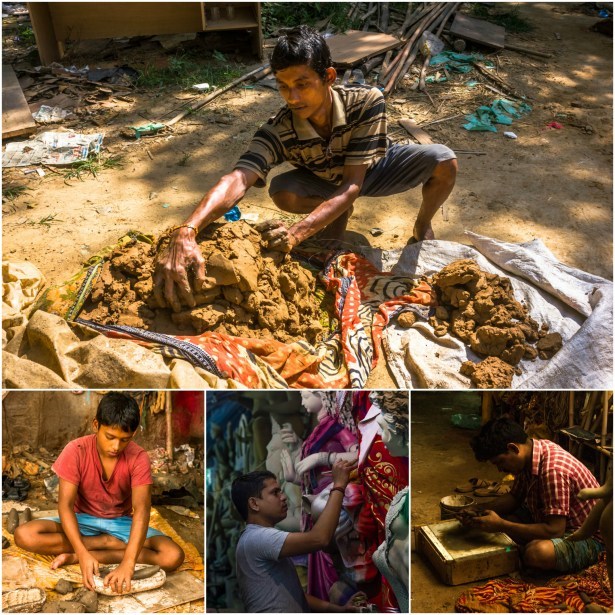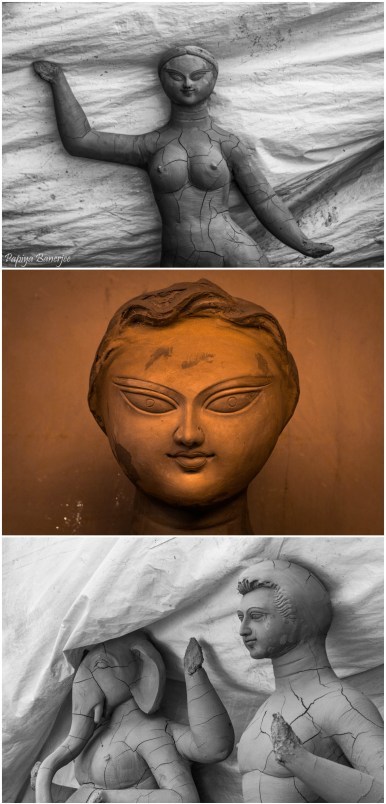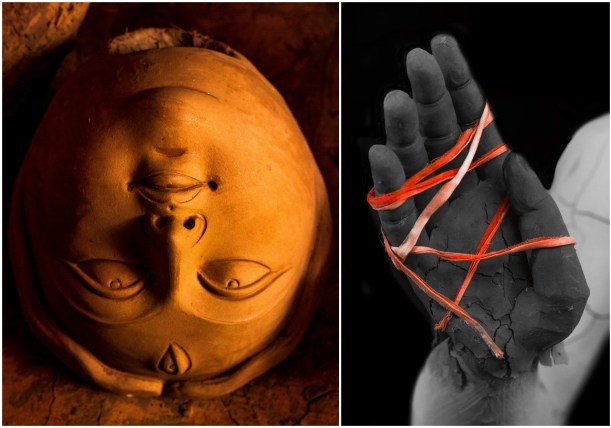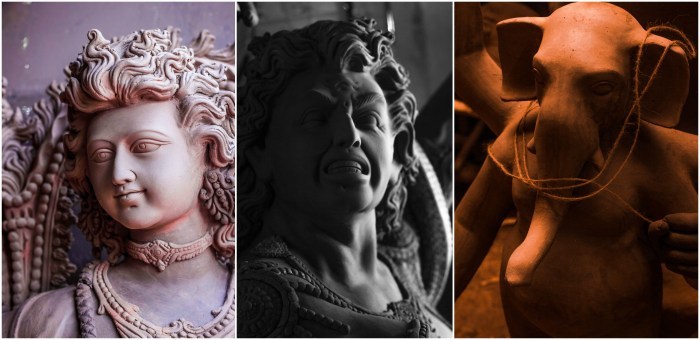Ya devi sarvabhuteshu vishnu-mayeti sadbita Namas tasyai, namas tasyai, namas tasyai namo namah
Durga Pujo at this time of the year is also known as Akal Bodhon. Why you ask? Well there is a very interesting story behind the why's and how's of this spectacular celebration of love and destruction. Let's go behind the scenes and find out, shall we?

Durga - Maa, Devi, Parvati or Kali, she has many names and has been revered upon from centuries. She was created by the Gods to destroy the evil - Mahishasur hence her another name Mahishasur Mardini
It is one of the biggest festivals of Bengalis and means so much to so many people in very different ways. For me, year after year, one fine day I would wake up and feel the sudden chill in the air, the atmos outside would seem laden with a pleasant haze and just like that suddenly, I would smell the fragrance in the air, breathe the Pujo, that is exactly when I know, Pujo aashchey (Pujo is coming)

Come September, and the CR Park in Delhi becomes abuzz with frenzied activities, after all everyone starts preparing for the upcoming celebrations which last more than 9 days (more so for the Bengalis as our eating and greetings start after the Pujo ends, fascinating isn't it?) However for the potters or Kumhor's the work starts way early, around 5-6 months ago.
Such is the story of a group of artisans from Kolkatta who, every year make the journey to sell for a living and create masterpieces which are sold off to various parts in Delhi NCR for a price.
Their makeshift workshop is created on the grounds of Old Chandraloke Cinema hall of Chittaranjan Park and is one of the several such arrangements made for many other potters (not the Harry Potter and clan but the real artistic potters, know what I mean) by the Pujo Committees.

So behind the scenes the process goes this way, that idol making is divided into many sections and usually, have different artisans multitasking on each section. The materials used for making the idols are broadly divided into which forms the base of the structure, which is sourced from areas which have smooth soil, mostly river banks (preferably Ganges) Bamboo, Paint and Ornaments.

On meeting the man behind the scenes - Mr. Manik Pal, I came to know that all elements of the idols are procured from different parts of the city (as per his convenience and of course the bargain price):
- Hay from Panipat
- Bamboo from Bihar
- Clay from Punjab
- Clothes & Ornaments from Kolkata
- Paint from Kolkata
Everything used in the Idol making has to be environment-friendly; it should belong from the earth and on Visharjan (immersion) go back to the earth.
The entire group of 12-15 artisans first finishes the idols in Kolkata and then come to Delhi for a period of 5-6 months, finishes their job here, go back and come back again before Saraswati Puja, to make more idols. They all come from Krisnanagar (Nadia district in Bengal)

The team works day in and day out to deliver the products which are pre-booked by big pandals all across Delhi. They stay in the crumbling structure of the cinema hall and often sleep in open, but the skills and artistic quality are to be marveled at.

The Process:
- First, the frame which supports the idols is made of bamboo and accordingly the height of the Idols is decided.
- Next, the basic design of the idol is finalized and the Idols are made out of Hay.
- Then comes the layers of Clay or Soil. The first patch of soil is put on the hay and left out to dry out. Soon it dries and cracks. Then again another layer of soil is pasted upon the previous one. So on and so forth there are at least 3-4 layers of clay is pasted upon the idol over a period of time. The soil is pounded very finely in order to make fine clay which is used on the idols.
- The idol is made in Parts. Finger, head, hands, body and then finally and slowly are put in place.
- Final stage comes of Painting and Decorating, which is done as per the requirement.

Interesting stories surrounding the Pujo:Akal Bodhan:
It is believed that when Lord Rama went to war with Ravana, he wanted to invoke the blessings of Goddess Durga first. The pre-requisites of the Puja demanded 108 Blue Lotuses. That being arranged, the prayers began, suddenly Rama realized that one of the lotus is missing. Not ready to let this disrupt his prayers, Rama promptly decided to offer his Eye as the replacement for the missing Lotus. It is known that as a child, his mother would always praise him for being born with blue lotus eyes. On seeing his devotion, the Goddess appears and grants Rama blessings to win the war.
Since, Durga Puja is technically celebrated in the Spring Season, Rama worshipping the Goddess at this time of the year came to be known as Akal Bodhon i.e., Akal means Untimely and Bodhon means Worshipping.

Mother's Homecoming
There are two aspects to having Durga Pujo at this time of the year, first due to Lord Rama, who defeats the king of Lanka - Ravan during the 8 th and 9 th day of the celebration. On the 10 th day, Ravana is believed to have died hence Dusshera is celebrated.
Meanwhile for us Bengali's it is a simple homecoming of Maa Durga. Kind of an annual Vacation, when she visits her parental home with her four kids, Ganesh, Laxmi, Karthik and Saraswati.
Maa Durga is also revered as mother earth, hence every year she takes time off to recuperate and get ready for the next season. Females who menstruate were also expected to take rest and not do heavy labor. All in all, it is a period of Rest, peace and Happiness, and all its attached metaphors.

Soil from a Brothel
This is the most talked about story, more so because of Bollywood. Nevertheless, the story goes like this, the soil which is used to create the idols of the Goddess and God's must be procured from various sources, which includes the banks of the river Ganga, and soil from a prostitutes house which is also called "punya-mati"
There are two thought processes behind this, one says that the soil is collected as a metaphor to include everyone from the society. Since prostitutes are looked down upon, during the Pujo, no one should have to face any discrimination and hence the ritual. However, these days not many idol makers abide with this Philosophy, though in Eastern Parts of Kolkata and wealthy household, this holds true still.
The second story says, that when one enters a brothel, he leaves behind all his virtues and godliness at the thresholds hence the soil there is rich with Goodness hence punya-maati.

The stories are endless and intriguing, but we have to stop somewhere.
I will keep bringing in more stories and anecdotes as time passes by.
Meanwhile, if you wish to check out the Potters village yourself, drop me a message and I will be happy to share the contact info of how to reach and even guide you towards a Guided group tour by Delhi by Foot. You can follow them for their guided walks here www.delhibyfoot.in
Till then,
Stay Curious.

This blog was originally published on 'Curious Foots'

